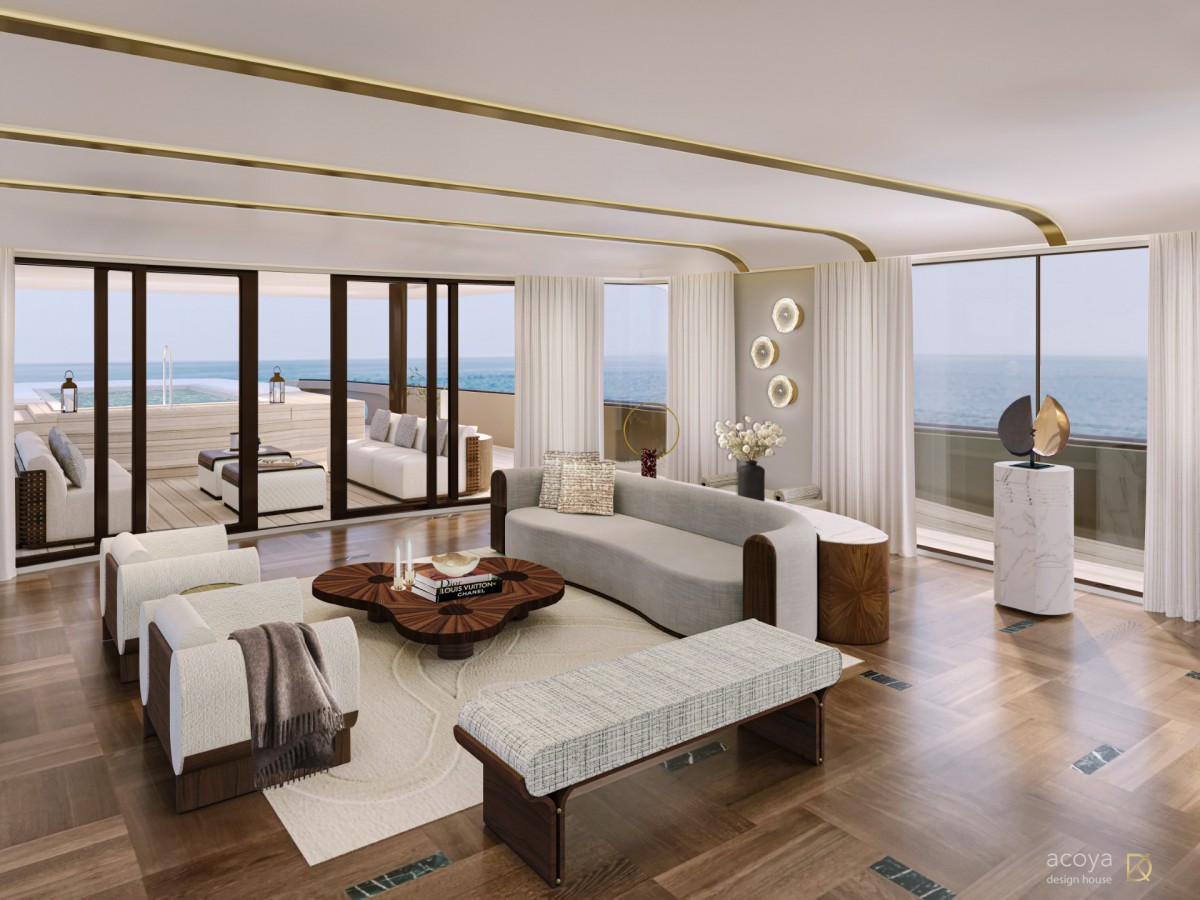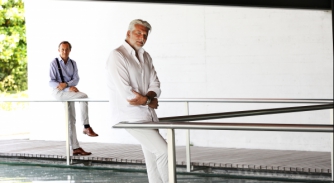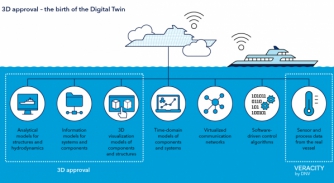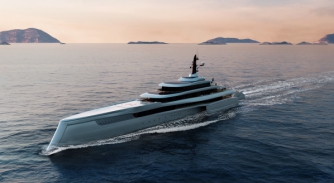Design at sea: how yacht interiors differ
Natalie Fogelström at Koja Design Studio and Anja Carlsson at Acoya Design House discuss the key differences between yacht and land-based interior design…

In this article, Natalie Fogelström at Koja Design Studio and Anja Carlsson at Acoya Design House discuss the key differences between yacht and land-based interior design and how to navigate the unique challenges and considerations.
Designing for life at sea presents a unique set of challenges that blend functionality, precision and luxury. Yacht interiors require meticulous attention to safety, efficiency and comfort, all while navigating the complexities of marine environments. Here’s how yacht interior design differs from land-based design across key dimensions:
Space utilisation
Yachts: Space is at a premium on yachts. Every inch must be maximised for both aesthetic appeal and functionality, often through hidden or built-in storage solutions integrated into walls, floors or furniture. The challenge is to balance sleek design with multifunctionality, keeping the space open yet practical for life at sea.
Land-based: While space can be a constraint in urban apartments or smaller homes, land-based designs typically offer more flexibility. Designers can incorporate traditional layouts with freestanding furniture, creating room for more stylistic expression without the same spatial limitations.
Materials and durability
Yachts: Materials must withstand the rigours of marine environments – saltwater, humidity and constant movement. Marine-grade woods, corrosion-resistant metals and durable, lightweight fabrics are essential. Attention to detail extends to colour selection; fabrics and finishes must be considered for their appearance under the intense light reflections off the water. Material treatment also varies based on whether the yacht is private or for charter, as well as the location of the material, be it for fixed or loose furniture and accessories.
Land-based: Without the harsh conditions of the sea, land-based interiors can feature a wider array of materials. Designers can use heavier, more delicate finishes such as marble, hardwood and textiles without the same durability concerns.
Weight considerations
Yachts: Weight is critical in yacht design. Excess weight can impact performance, fuel efficiency and stability. Lightweight materials, such as aluminium and composite woods, are commonly used to maintain balance while still achieving a high-end look.
Land-based: There are no significant weight constraints on land, allowing for heavier, more solid materials like stone and hardwood to be used liberally in design.
Movement and safety
Yachts: Yacht interiors must account for movement at sea. Furniture, décor and even artwork are securely fastened to prevent shifting. Safety elements like rounded edges, recessed fixtures and non-slip surfaces are also standard, especially for areas prone to rough seas.
Land-based: Movement is not a concern, so furniture can be freestanding, with more room for sharper edges and fragile décor. Designers have greater flexibility when experimenting with placement and layout without worrying about safety from movement.
Climate control and ventilation
Yachts: Marine environments require efficient climate control and ventilation systems to combat salt air, humidity and temperature fluctuations. Compact, watertight solutions are essential, especially for small portholes that limit natural airflow.
Land-based: Climate control systems on land are designed for more stable conditions, allowing for larger windows and natural ventilation. There is less need for the specialised systems required on yachts.
Lighting
Yachts: Lighting design on yachts must compensate for limited natural light, given the smaller portholes. Artificial lighting is carefully planned to create a bright, spacious atmosphere, often with energy-efficient LEDs to conserve power. However, newer yacht designs increasingly incorporate larger, panoramic windows to enhance natural light, a notable shift from older models.
Land-based: Larger windows and skylights offer ample natural light in land-based projects, with more flexibility in artificial lighting since power consumption is less of a concern.
Aesthetic and style
Yachts: Yacht interiors often feature sleek, minimalist designs that prioritise space efficiency and built-in functionality. Traditionally, yacht design leans towards opulence, with rich, nautical themes – navy tones, white finishes, and natural wood – reflecting the sea environment. However, as trends evolve, simpler, more pared-back designs are emerging to offer a sense of calm amidst today’s busy lifestyles.
Natalie, founder of Koja Design, emphasises the importance of creating interiors with “timeless elegance”, ensuring designs remain sophisticated and balanced, even as trends shift during the often four-year build process of a yacht.
Anja Carlsson, founder of Acoya Design House, foresees an increased focus on minimalist yacht interiors to counterbalance the fast-paced world outside.
Land-based: With fewer design constraints, land-based projects offer broader aesthetic choices, from traditional to modern to avant-garde. Designers have more freedom to explore styles without worrying about marine limitations or long build timelines.
HVAC and water systems
Yachts: HVAC systems on yachts need to be compact and efficient, with specific design considerations for salt air and humidity. Freshwater is also limited, so water-saving systems like low-flow taps are crucial.
Land-based: On land, HVAC systems are larger and less constrained, while water supply is typically more abundant, allowing for fewer limitations on water usage.
Customisation
Yachts: Almost every element of a yacht’s interior needs to be custom designed. From built-in cabinetry and seating to bespoke storage solutions, customisation is essential to maximise limited space and ensure optimal utility and aesthetics.
Land-based: While customisation is common in luxury homes, there is often more room for off-the-shelf solutions, allowing for greater design flexibility.
Regulatory considerations
Yachts: Marine design must adhere to strict regulations regarding fire resistance, safety codes and structural integrity to ensure seaworthiness.
Land-based: Building codes still apply on land but are generally less restrictive, offering greater design freedom compared to the stringent regulations required for yacht design.
Cost considerations
Yachts: The intricate constraints and extensive customisation required for yacht design tend to drive costs significantly higher compared to land-based projects. Every detail, from materials to fixtures, must meet rigorous standards, often escalating costs.
In summary, yacht interiors demand careful consideration of space, weight, material durability, safety and functionality, all while maintaining a luxurious aesthetic. Land-based interiors, while also potentially luxurious, don’t face the same constraints, allowing for more design flexibility.
As an open-source platform we offer an industry-wide invitation to anyone and everyone in our sector to share their knowledge, experience and opinions. So you are invited to share your views and perspectives on the Refit market for our next issue. If you have an interesting and valuable contribution to make, and would like to join our growing community of guest columnists, share your ideas with us at newsdesk@thesuperyachtgroup.com.
Profile links
NEW: Sign up for SuperyachtNewsweek!
Get the latest weekly news, in-depth reports, intelligence, and strategic insights, delivered directly from The Superyacht Group's editors and market analysts.
Stay at the forefront of the superyacht industry with SuperyachtNewsweek
Click here to become part of The Superyacht Group community, and join us in our mission to make this industry accessible to all, and prosperous for the long-term. We are offering access to the superyacht industry’s most comprehensive and longstanding archive of business-critical information, as well as a comprehensive, real-time superyacht fleet database, for just £10 per month, because we are One Industry with One Mission. Sign up here.
Related news

Nuvolari Lenard makes its marque
Dario Schiavo in conversation with the design studio evolving into a marine brand in its own right
Business

Using 3D models to streamline the approval process
DNV’s Martin Richter and Ole Christian Astrup dissect how the process of approving vessel design can be made smoother by the use of 3D models
Fleet

Superyacht UK Young Designer Competition commences
The event launched the 2024 Superyacht UK Young Designer competition, offering a platform for talent exploration and industry engagement
Fleet

Lateral presents new 140-metre multihull project
The progressive naval architecture firm has introduced a new highly efficient and hydrodynamic 140m trimaran yacht concept with T. Fotiadis Design
Fleet
.jpg)
A new era of crossover design
Interview with Michele Dragoni of Dragoni Design Lab about future trends in the market
Fleet

Valentina Zannier founds new design studio
SuperyachtNews sits down with the internationally acclaimed designer following the unveiling of her new studio
Fleet
Related news
Nuvolari Lenard makes its marque
2 years ago
Lateral presents new 140-metre multihull project
2 years ago
A new era of crossover design
2 years ago
Valentina Zannier founds new design studio
2 years ago
NEW: Sign up for
SuperyachtNewsweek!
Get the latest weekly news, in-depth reports, intelligence, and strategic insights, delivered directly from The Superyacht Group's editors and market analysts.
Stay at the forefront of the superyacht industry with SuperyachtNewsweek



